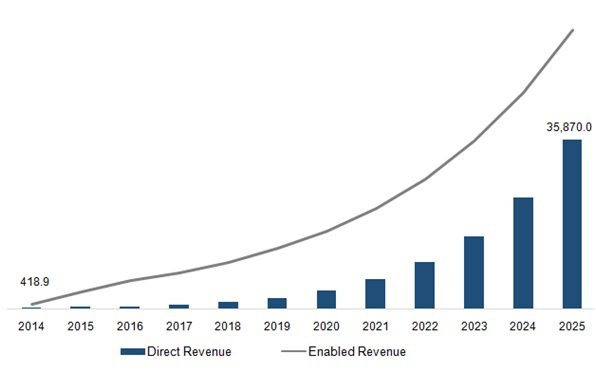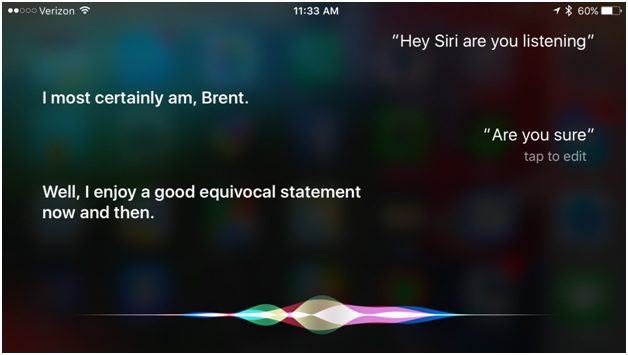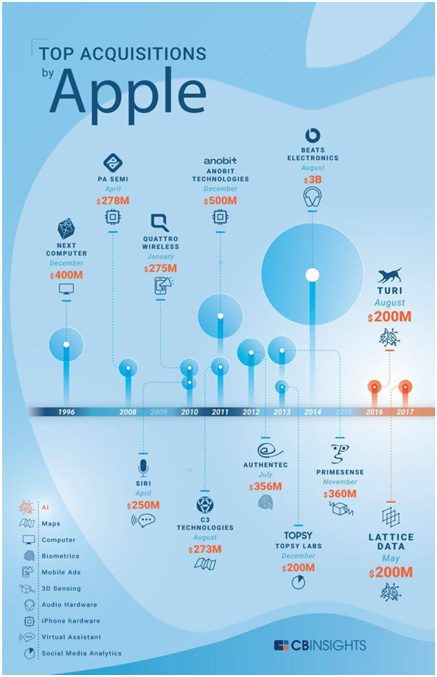AI’s wide reach
Artificial Intelligence (AI) sits at the forefront of technology today. From software to hardware, smartphone apps to autonomous technologies and more, AI holds wide-reaching promise. However, despite the strong stand of AI in society today, many still question what exactly it is.
Artificial Intelligence is the research and development of machines and programs which are able to simulate human intelligence. AI is primarily involved hardware as well as software programs that perform human functions. These include processes such as acquiring information, acting on acquired information, and self-correction.
Although AI is often regarded as a new field of technological innovation, it is actually a well-established area of computer science. Its history goes as far back as six decades. So far, some of its most well developed sectors include:
- Machine Learning;
- Machine Vision;
- Speech Recognition;
- Expert Systems; and
- Digital Assistance.
As stated, AI is applicable to multiple industries. Today’s world embraces intelligent automation in every technological realm, but AI is particularly popular among smartphone manufacturers and users. This is even more so today, with the expected improvements on the technology by the upcoming 5G roll out. Apple recognizes this trend, and focuses its efforts at a stake in the billion dollar AI market towards its smartphones.

Apple’s AI strategy
Unlike its competitors, Apple is focused on running workloads locally on devices, as opposed to relying on cloud-based resources. This strategy remains true to the company’s primary business focuses, which include selling devices and maintaining the privacy of its consumers.
Apple CEO Tim Cook cites the company as having an active base install of 1.4 billion devices worldwide. iPhones account for 900 million of these active devices. An in-depth look at Apple’s AI strategy, as well as its biggest product, suggests a focus on mobile devices before branching into other sectors. The launch of Siri, Apple’s AI forerunner, solidifies this idea further.
Siri: The forerunner of Apple’s AI strategy
Siri is the foremost indicator of what Apple’s AI strategy is. The virtual assistant is only available on devices which run on the company’s operating system. In order to access Siri, one must have a supported Apple Device.
Siri, launched in 2011, is an in-built ‘intelligent assistant’ which is capable of operating based on commands made in natural languages. The virtual assistant is able to perform a number of diverse functions on Apple mobile phones and their applications. These functions range from sending messages to placing calls and setting reminders.

Since its integration into Apple’s (iOS), Siri has swiftly become a household name to iPhone and Apple users worldwide. Reports filed by Apple in 2018 show that Siri boasts 500 million users, although it’s unknown whether these users accessed the assistant on a daily or monthly basis
Apple’s Siri set the pace for Artificial Intelligence in consumer electronics. It’s therefore surprising to see how far Apple has fallen behind when compared to its competitors. This lag can be attributed to a number of factors, including the core of Apple’s AI strategy – workloads running locally on devices as opposed to cloud-based resources.
With the recent M&A (Mergers and Associations) and innovations, the tech giant seeks to close the gab between it and its competitors. However, a question lingers: Could these measures be a little too late?
The future of AI for Apple
Within the last five years, Apple has merged and acquired a total of 12 AI-related companies. Of these acquisitions, two stand out: REGAIND – an image platform – and Lattice Data – a data analytics company. Apple has also acquired hardware companies such as Beats and Anobit over the last few years.

Apple has provided Machine Learning frameworks which will revitalize the company’s AI interface. This will allow AI developers create related technology for devices which run on Apple’s operating system.
Although phones seem the be the company’s main focus for now, as far as AI is concerned, its developments aren’t limited to just phones. In 2018, Apple introduced a new framework called Create ML — a GPU-accelerated tool for AI Vision and Natural Language model training on Mac computers. But such frameworks can also translate to its mobile devices.
For example, Apple developers who are familiar with Xcode, Apple’s app for coding programs for its devices, can easily use the Create ML framework. The framework utilizes Swift, Apple’s programming language, making matters even simpler for developers looking to train AI. The Create ML framework does not function on Windows PC or other non-Apple devices.
Alongside Create ML, Apple will be releasing Core ML 2, an improved version of its Machine Learning software development kit. This version of Core ML is 30 percent faster than its predecessor in relation to new batch prediction function.
Additionally, Core ML 2 can compress machine languages by up to 75 percent due to quantization. The framework allows for easy integration of machine learning models. This will aid developers in building intelligent applications while using the least possible amount of code.
Alongside its improvements to Machine Learning, Apple is looking to integrate an AI chip known as the Apple Neural Chip. The Neural Chip is set to improve applications such as facial recognition, some aspects of speech recognition, and predictive text.
Conclusion
Apple’s AI strategy is built around running workloads locally on its devices. Despite being a forerunner for AI worldwide, Apple has been relegated to the background by competitors such as Google, Amazon and Microsoft.
To improve its stance in the AI market, Apple has made a few acquisitions over the years. With new M&A’s and recent ML innovations such as Create ML and Core ML, Apple is enabling its developers improve on its AI interface. For now, the company’s strategy is focused on innovations tailored towards its mobile phones. Expect improved AI capabilities and interface changes on upcoming iPhones.
